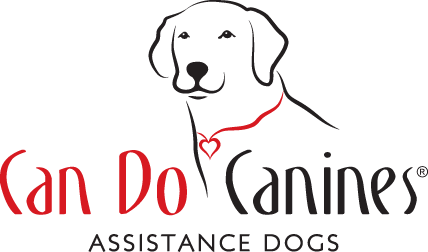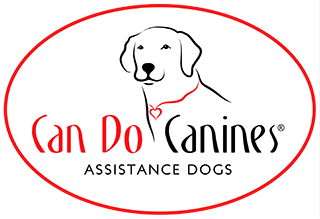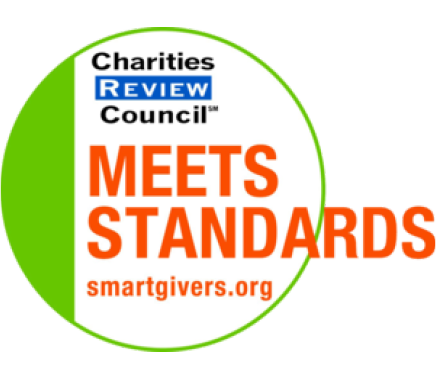Cue: Kennel
The dog should enter their crate willingly, and wait with the door open until they are released. Once the door is shut, the dog should remain quiet despite activity around the kennel.
Impact on the dog's future work: For the safety of our clients, it is important that the dogs have impulse control when entering and exiting the kennel. Some clients may need additional time to regain their balance after opening the crate door. This is why it is important that the dog doesn’t enter or exit the crate until cued.
Cue: Chin
The dog rests their chin in the handler’s palm. This cue implies duration; the handler should be able to examine the dog’s teeth, ears, and eyes.
Impact on the dog's future work: Clients use the chin cue to check the dog's eyes and ears. It is also used for bonding between the client and the dog.
Cue: Nudge
The dog pushes their nose firmly into the palm of a hand. Nudge as a verbal is only used on the body (hand, or leg for "get help").
Impact on the dog's future work: "Nudge" is the foundation for many of the higher-level skills the dogs learn while in final training. Some of these skills are retrieves, push plates, and get help.
Cue: Off
The dog puts all four feet onto the ground (cue to remind dog not to jump up or to release from a table).
Impact on the dog's future work: Clients utilize the "off" cue to remind their dogs to keep all four feet on the ground or to prompt them to jump off surfaces, such as grooming tables. When leaving raised surfaces, it is important that the dog has impulse control and waits to jump off the surface until cued.




